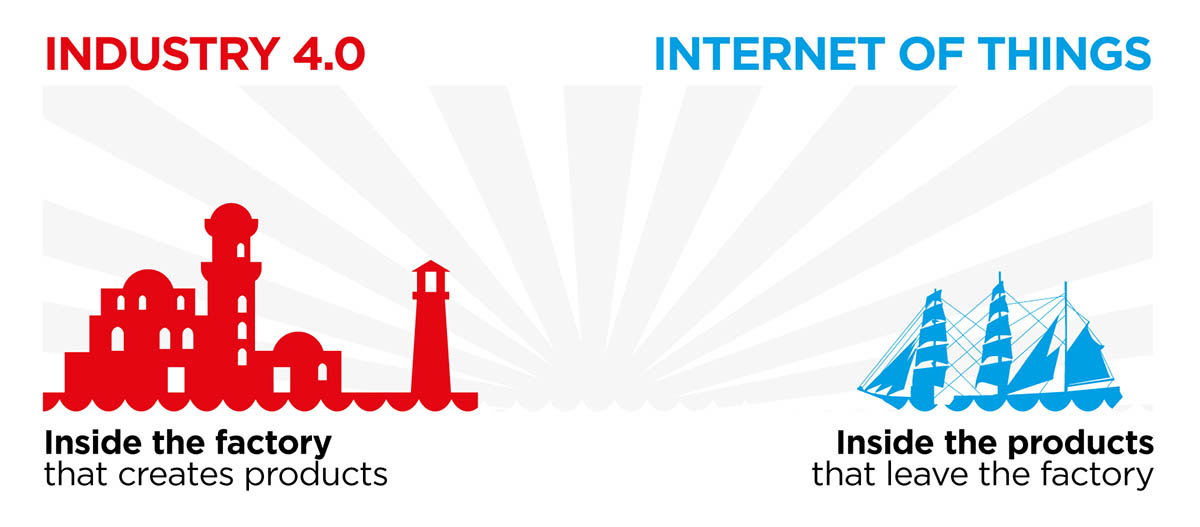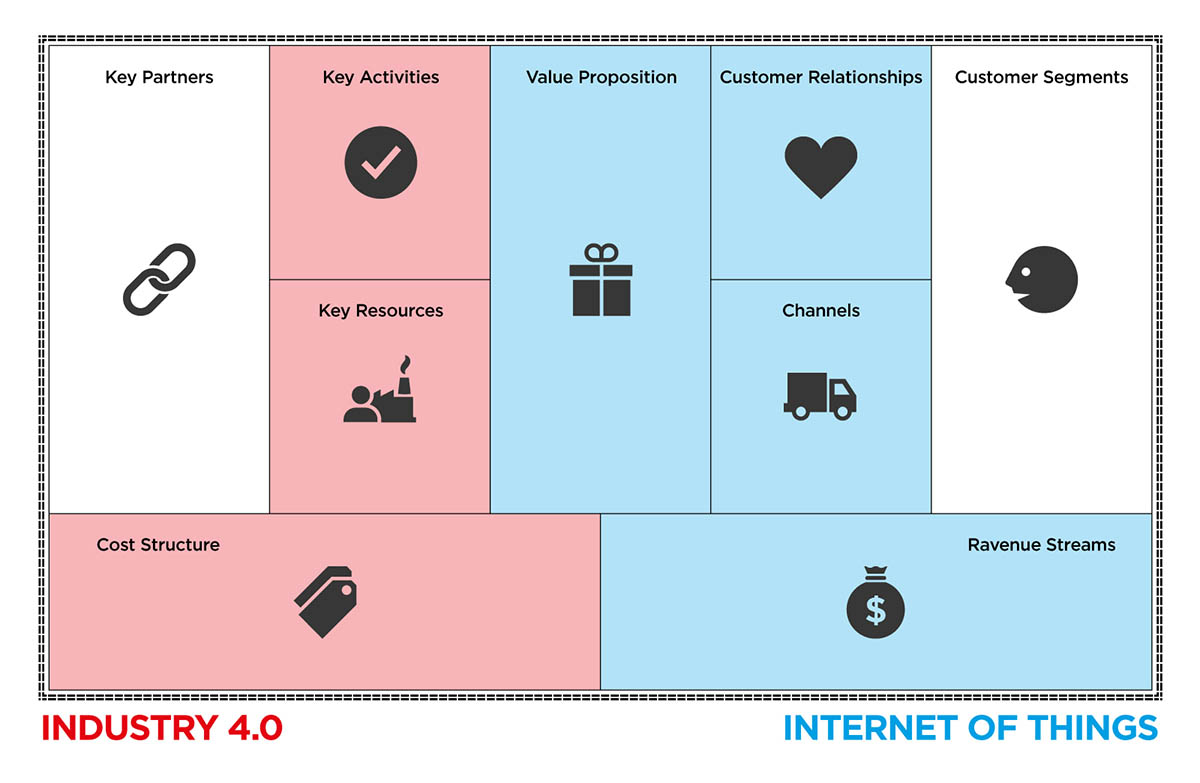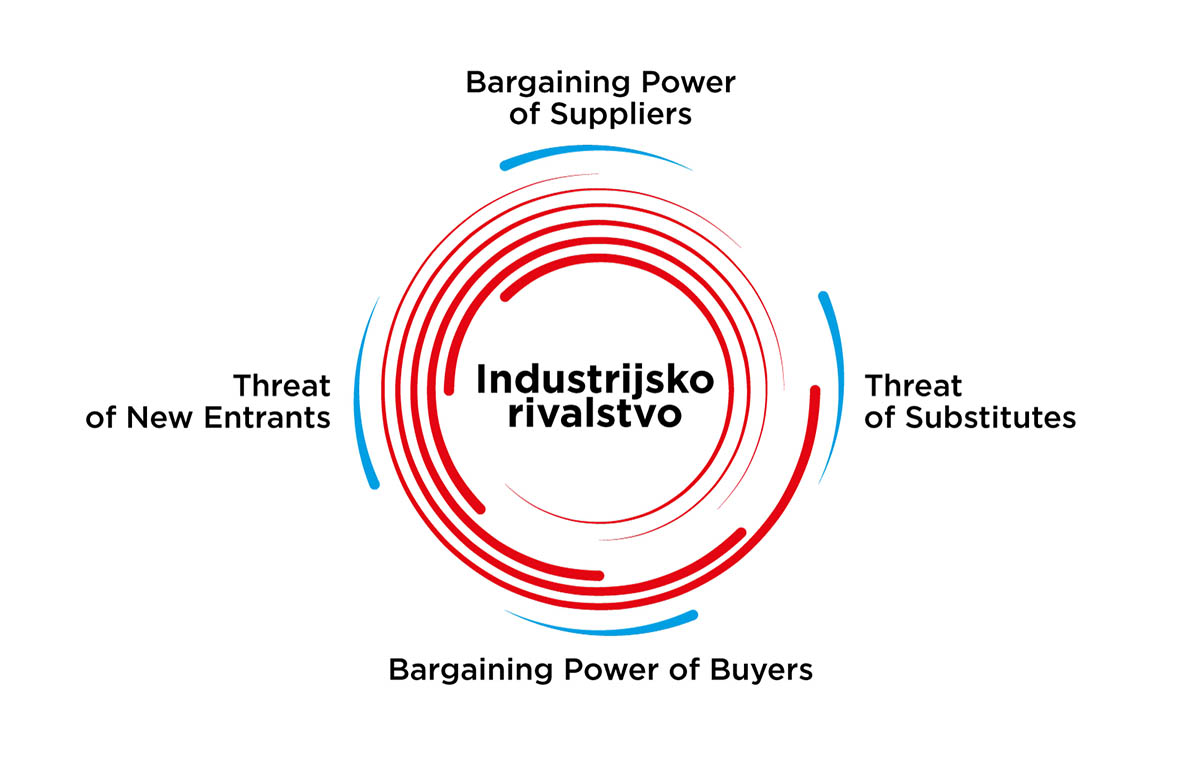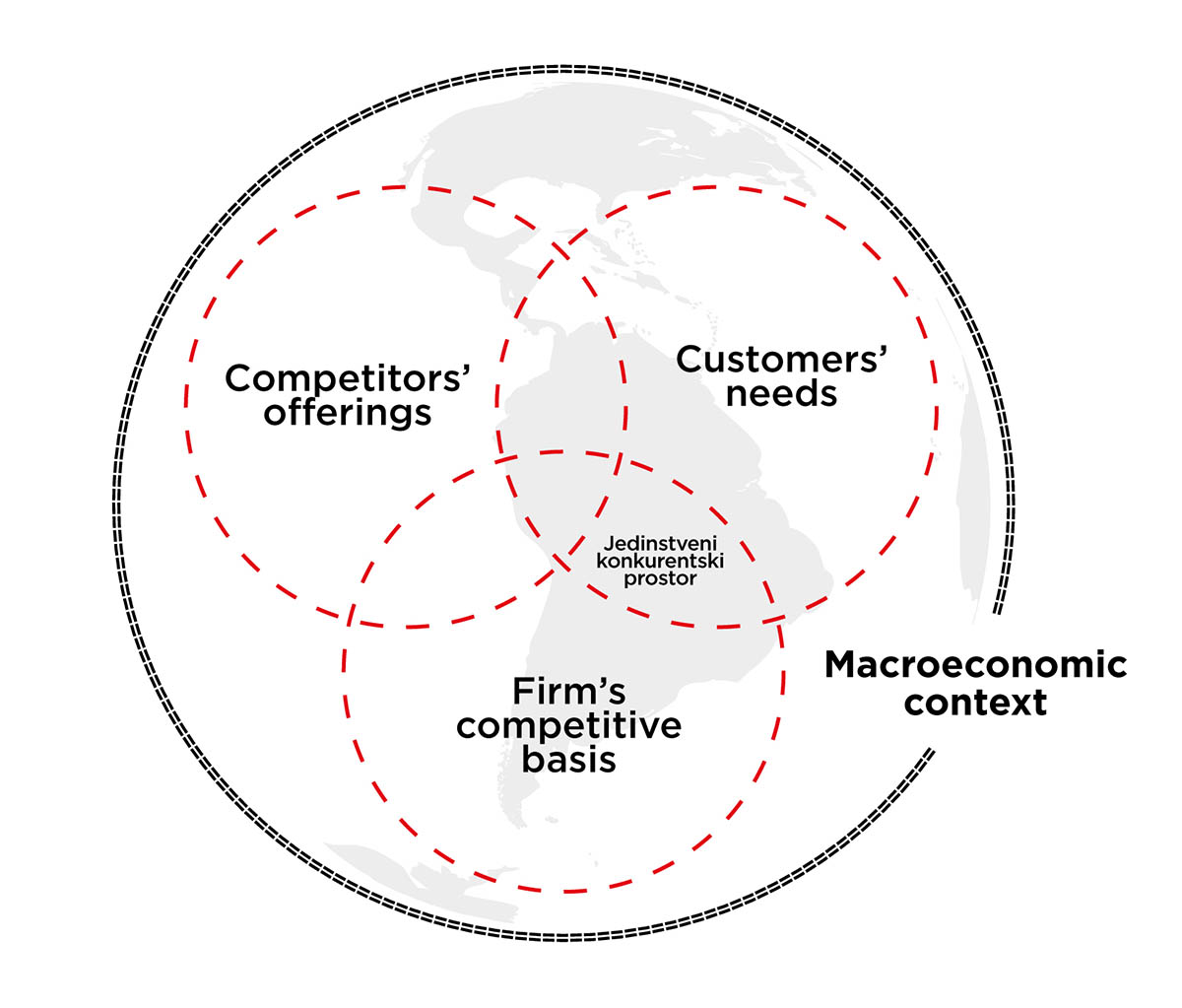IoT sailing the Blue Ocean

The Blue Oceans actually represent new, unexplored markets where are new potential clients, where new requests and expectations are created, with which, you are actually leaving or separating from the Red Oceans where competition is in the height, the big players (companies) are dictating the terms, and to the end-users is offered more than they require and what they need, with small margins, of course.
You do not always have to compete with or against the competition
“Blue Ocean Strategy” is explained in the book by W. Chan Kim and Renee Mauborgne in 2005. It describes how to reach new clients, expand the existing customer base and increase sales without having to compete with the competition.
The Blue Oceans actually represent new, unexplored markets where new potential clients are located, where new requests and expectations are created, with which, you are actually leaving or separating from the Red Oceans where competition is in the height, the big players (companies) are dictating the terms , and to the end-users is offered more than they require and what they need, with small margins, of course.
The strategy is based on the idea of leaving the Red Oceans and creating the Blue ones. According to them, this is possible with a bid that is different from the existing ones and which reduces and/or eliminates and increases and/or creates all those factors that support the uniqueness of the offered services or products and which really meet the real needs of the end-users. In fact, this way it is renewed or created a new or additional value of the service or product.
Therefore, the base of the strategy should be the Value Innovation. They are inseparable parts. The value without innovation has a tendency to focus on creating value on an incremental scale, on something that improves the value, but that it is not enough to be noted on the market. Innovations without values tends to be technologically oriented, pioneer on the market or futuristic, often beyond what customers are willing to accept and pay.
Industry revolution 4.0 vs Internet of Things
Industry tends to reduce costs and increase reliability of involved processes. Therefore, it makes sense to examine Industry 4.0 related to technologies that directly affect the improvement of production processes on the one hand and, IoT technology related to creation and production of the products on the other hand.

Impact on the production business model
On the example of the Business Model Canvas (BMC), it can be seen that the impacts of Indutry 4.0 and IoT are often in diametric points. In particular, Industry 4.0 is applicable to:
• Implementation of activities
• Resource utilization
• Cost analysis
While IoT refers to:
• Relations with the client
• Bid value
• Distribution channels
• Payment

The real people must participate in order to raise the ROI (Return Of Investment). The first influence have Production and Operations Managers, while for the second one are responsible the Marketing, Customer Service and Product Managers. Overlaps are certainly possible.
The question is whether IoT is really “against” Industry 4.0? A short answer would be: NO. Some longer: predictive maintenance is based on remote monitoring and just-in-time deliveries of ALL.. services and goods… both for machines and people (none of this still applies to users).
Let’s try to define basic „problem“ of manufacturing industry (generally: companies) that not only makes physical products, but also provides services. The earnings are made in the moment of taking the ownership by the clients. Risks and property rewards are transfered to clients at sales points after delivering goods (products) or services, and, in some cases, with the service performances itself (nothing less important).
Thanks to the arrival of IoT, post-sale activities such as maintenance and upgrade become more efficient.. On the basis of real-time monitoring, it is possible to switch from reactive to predictive intervention and operation. Predictive analytics and data analysis enable interventions before failures with all the positive effects on the business: from the client side, the value of products and services, the savings of various types to create new pricing models.
Product as a Service
Remote monitored, internet-connected products have opened new business scenarios in which product as a service, or better, „value in use“ replaces one-time transaction or delivery of product or service. This way, it is possible for producers (providers) to provide adequate support and payment of support through lifetime of product or service.
Yes, it already exists – big players are already working on leasing and you know them, from subcription-based to “pay as you go” model, from photocopiers of machines, IT infrastructure (physical and leasing, but also to Cloud) to licensed software .
We will not describe the benefits here, many of which are intuitively clear on both sides (supplier/ producer – client), but we will only point out one on the consumer side – pay as much as it really spends or use “something”.
Socially useful, socially responsible and ecological action are not only an obligation, but also an example of opening new markets. Despite of the lack of technological standards (at the level of connectivity and protocols) and still, young regulation globally, IoT can easily become one of the main technology carriers.
How IoT transforms the structure of market
Michael Porter, a marketing and management guru, is the creator of the Model of the Five Competitive Forces, an analytical scheme that allows manufacturing companies to evaluate their competitive position by analyzing the intensities of forces existing on the market:
• Risk of new entrants (rivals)
• Threat of substitutes
• Negotiating power of customers (users)
• Negotiationg power of suppliers
• Industry competition

It’s important to mention that all this is related to manufacturing industry. We’ll explain briefly the Porter’s seeing of each force.
Negotiating power of suppliers is decreasing
Traditional products (and components) are losing value because of IoT and appropriate “smart” components and their connectivity. Therefore, the products are losing importance and value, and manufacturing companies need new suppliers and service providers and manufacturers of “smart” components. So, service providers are needed: from connectivity, software solutions to data storage, as well as manufacturers of integrated technologies that are experiencing constant innovation and price reduction at the component level.
Caution! Some of them are really big: Google, Apple, Amazon, Microsoft … and “something” that is now free may become too expensive in the future. This is my attitude, not Porter’s, but you need to keep this in mind even when you want to start using someone’s API. Open API and “free personal use” are the marketing tricks of some players for creating and spreading the community … around the product and/ or brand.
Threats of substitutes are increasing
Related industrial products can offer superior performances, functionalities, maintenance and better and more customized user experience in relation to the traditional industrial products. The Product-as-a-Service model expels the necessity of ownership and enters into more flexible method of payment (service subscription).
Risk of new entrants (rivals) is changing
It can be increased but also reduced. It depends on how and where it is viewed. Input costs in already established and industry- related products are quite large and not anyone can choose them. Existing players can lift these barriers if they constantly innovate existing products and this is the battle in Red Oceans. On the other hand, the entry of a new player can significantly shake the balance of forces on the established market.
There is also a place for swimming in the Blue Ocean, for innovators of new technologies whose entry into the market is actually the creation of a new business and access, and hence, not only taking over some part of existing clients, but the acquisition of new ones.
Industry competition will fade out
Yes, we purposely skipped the Buyer or the End User – Payer.
The products will not differ in price (mostly for the mass usage), but by performances and functionalities, services that go with them, personalisations and gathered data from clients.
Still, companies will be confronted with temporary increase of costs in order to enable IoT functionalities of their products, but this testifies to retreating from the clasic industry competition based on reducing production costs and its optimization or acquiring of larger number of clients (which will never die away).
After all, companies that appear on IoT technological stack and that are not influential or recognized can become important because of already existing giants or new large companies.
Negotiating power of the buyer will weak?
Yes, that was what I thought, because I was a buyer in 99% of all my life – just keep on reading.
Smart, connected products dramatically widen the possibility of product differentiaton, removing the competition and the bidding from the price. If the price becomes something that is not spoken off because it is appropriate, then you won’t be the “problem” who needs negotiating. Based on the collected data from and about the end users, it is possible to segment them and adjust the products (services) that are provided, so the offer becomes appropriate. It will better sustain itself and the aditional price also.
All of this leads to strengthening the bonds with users and raising their loyality. Historical data that is accumulated about you and your usage “makes more difficult” to go to another provider of the same or similiar services. “Similiar” breaks already aquired accomodity and customs – hearth of loyality and empathical access in everyone of us.
On the other hand, in support of the headline thesis, connected industrial products enable companies to reduce the dependency to already existing providers and partners because their number is growing (technologies are getting more progressive and cheaper, in most cases). So, the profit grows, but partly the final service price is getting lower (product or service).
Makes sense? Sometimes it’s good to ask ourselves less questions. This doesn’t mean I’m not a User and that I’m not in the Focus!
How IoT makes user experience better
On the basis of my data, as a user of the products or services. Customer Behaviour Analysis is a weapon and IoT is a way to collect data and leave the software frame in a sense which option is the mostly chosen and which side was the most visited in the application. Importance of collected physical size or managing of it will raise – from your location to how many of something is there at the momment. Then the system and the appropriate product or service can react in the right way and help you…
The conclusion is that the companies will be able to:
– Understand the non-optimal behaviour and unefficient usage of the products or services by the user.
– Check and confirm if and how the product or service is used in case of return or dispute.
– Improve the product or service in continuation based on the user needs.
– Enrichen the set of aditional services for the main product or service.
Digital transformation and IoT
It’s not the main point of this article but it can’t be left out. I will mention it shortly. It is necessary and it must be a part of the Business Strategy regardless the new market is oppening (without competition in the begining) or if it’s worked on adding and innovating values of new products or services of some company.
IoT contributes to the definition of something that is called Unique Competing Space ,ie it “widens” it. It’s not important if the company has rivals or not, sails the Red or Blue Ocean.

Digital transformation helps to collect the data and turning them into information, ie efficient usage, which raises or adds value to existing or new products or services.
Does the sailing the Blue Ocean end with appereance of other ships?
With dynamic IoT strategy it never ends.
Generally, Blue Oceans may become Red in case of market made around product or new service in which rivals enter with the similar or alternative solutions, reducing the part of buyers of the company that made the market which results in the profit drop (or slowing the company grow).
The World Economic Forum published in 2015 the Industrial Internet of Things: Unleashing the Potential of Connected Products and Services, in which the acceptance and impact of IoT technology in the industrial sector is placed in 4 phases, from a short to long-term: use as a medium, pay-per-use, pay-per-outcome, and, finally, full automatization of the machine process with IoT technology.
Independently, if your time frame from 20 to 30 years is big or not, only few companies are positioned and strategically assorted in the first two phases. We have to take in account the step by step growth of the companies and their business, ie the change of business culture and courage to put the technologies into practice. Technologies also grow and act on their acceptance.
More important thing is that the IoT access will constantly be followed by technological improvement of some kind.
Companies that use IoT will always find Blue Oceans for their sail.
More precisely: Wherever you find yourselves (color of the ocean), it is better to sail than swim.
Board the IoT ship.
Lao Tzu[/kswr_iconboxinfo]

